Prince of Persia Sands of Time Cover Art for the Playstation 2
![]()
The following article, Prince of Persia: The Sands of Time (game), uses partial or complete Creative Commons Licensed content from Wikipedia. Information can exist remixed or replaced at any time in future edits.
Prince of Persia: The Sands of Time is a third-person activity-gamble puzzle-platforming video game adult by Ubisoft Montreal and released worldwide in November 2003 beyond most major platforms. It was published by Ubisoft in western territories and Sony Estimator Amusement in Japan. Prince of Persia: The Sands of Time is a re-imagining of the original Prince of Persia Trilogy that began with Jordan Mechner's 1989 game for the Apple II. The first in The Sands of Time Trilogy and follows the journey of an arrogant immature prince whose father attacks the Maharajah's kingdom in India and discovers a mysterious antiquity called the Dagger of Fourth dimension that tin control time. When he is fooled into opening the Hourglass of Fourth dimension by the Vizier, he is accompanied by the princess of the conquered Indian kingdom to recapture the Sands of Fourth dimension, enchanted sands that transforms anyone it touches into hideous Sand Creatures.
Announced in March 2003, The Sands of Fourth dimension was released beyond PlayStation ii, Xbox, GameCube, Game Boy Accelerate and Microsoft Windows between October and November of that yr. A version for mobile phones was developed and published in Due north America by Gameloft in 2004. From 2017 it also works on Xbox 1 via backward compatibility. The Sands of Times received disquisitional acclaim upon released from major gaming websites and award ceremonies[1], only failed to meet initial sales expectations despite its eventual success.[two]
The success of The Sands of Time led to three sequels, Prince of Persia: Warrior Within, Prince of Persia: The Two Thrones, in 2004 and 2005, respectively; and later, Prince of Persia: The Forgotten Sands, set between The Sands of Time and Warrior Inside, released in May of 2010 on PlayStation 3, Xbox 360, Nintendo Wii and PC. On November 2010 and April 2011, The Sands of Time was included in the PlayStation exclusive HD Collection for The Sands of Time Trilogy aslope The Two Thrones and Warrior Within.
A remake of the game, developed past Ubisoft Pune and Ubisoft Mumbai, was announced at Ubisoft Forward 2020, was originally scheduled to release on January 21, 2021 for Microsoft Windows, PlayStation 4 and Xbox I, but was subsequently delayed to March 18, 2021, and then to unspecified date.
Contents
- 1 Story
- 1.i Official Clarification
- 1.2 Characters
- i.3 Summary
- 2 Enemies
- 3 Levels
- 4 Gameplay
- 5 Development
- 5.1 Acquisition of Prince of Persia
- 5.2 Pre-Production
- five.3 Product
- 5.four Writing
- 5.v ADR and Sound Effects
- vi Ports to other Systems
- six.1 Handheld Ports
- 6.1.1 GameBoy Advanced
- half-dozen.1.2 Mobile Game
- six.1 Handheld Ports
- vii Compilation Releases
- 8 2020 Remake
- 9 Reception
- ix.i Reviews
- nine.ii Accolades
- ix.3 Sales
- 10 Soundtrack
- 11 Moving-picture show
- 12 Trivia
- xiii Video
- 13.ane Trailer
- thirteen.2 Evolution
- 14 Gallery
- 14.1 Box Art
- 14.ii Promotional
- xiv.3 Screenshots
- 14.4 Wallpapers
- 14.5 Concept Art
- xv References
- xvi Series Navigation
Story
Official Description
- "An unmatched hero wielding powers of mythic proportions, the prince returns to action adventure gaming with gravity-defying acrobatics, ferocious fighting skills and the ability to curve fourth dimension to fulfill his destiny. Ubisoft's Montreal studio presents THE SANDS OF TIME, a technological breakthrough that will modify the face up of action adventure gaming forever. Erase the past, behold the hereafter and freeze the present in existent time for unlimited gameplay variations; exotic worlds and vast kingdoms uncover the mysteries of a world never before explored in action adventure gaming medieval Persia mythical and deadly holds a staggering array of landscapes and kingdoms to explore and conquer. A sweeping chance of betrayal and triumph, the ballsy legends and deadly creatures of mythic Persia burn down to life in this suspense filled tale featuring more than twists and turns than the labyrinthine palace itself."
- —Official Clarification[iii]
Characters
- Prince - The protagonist of The Sands of Time Trilogy, the Prince is a fellow when accompanies his father for his first taste of battle. He discovers the Dagger of Time and becomes the one who releases the Sands of Fourth dimension.
- Farah - The princess of Bharat, she helps the Prince attain the Tower of Dawn to recapture the Sands of Time, determined to see his mistake undone earlier the Sands of Time can consume everything.
- Vizier - The antagonist of The Sands of Time, the Vizier is a dying man seeking the immortality promised by the Sands of Time. He tricks the Prince into releasing the Sands of Time in a gambit to steal the Dagger of Fourth dimension from him.
- King Sharaman - The father of the prince and ruler of a kingdom in Persia, Sharaman was deceived past the Vizier and convinced to attack the Maharajah's kingdom. Sharaman is transformed into a Sand Animate being past the Sands of Time.
- Sultan of Azad - An ally of Persia and ruler of Azad, the Sultan is one of the victims of the Sands of Time.
- Azad Guard - The terminal human survivor the Prince encounters, he helps the Prince activate the palace defense force systems earlier succumbing to the Sands of Fourth dimension.
- Maharajah - A grapheme mentioned only by proper noun, the Maharajah is the male parent of Farah. He was the ruler of Bharat before information technology was conquered and ransacked by Farsi soldiers led past Male monarch Sharaman.
Summary
King Sharaman, his son and a company of men are traveling from Persia to visit Azad when they pass through Republic of india. While in that location, Sharaman meets the Maharajah's adviser, the Vizier. The Vizier convinces Sharaman to attack the Maharajah'south kingdom on the promise of "honor and glory". When the Vizier kills ane of the guardsmen at the gate, he signals Sharaman'southward company with a flaming arrow.
Sharaman and his army begin their attack on the Maharajah'southward kingdom before dawn. During the battle the Vizier reminds the Persian king of his "hope" and mentions that the Maharajah's Treasure Vaults prevarication inside the walls of the kingdom. Eager to prove himself, Sharaman'southward son rides ahead to enter the palace. He is thrown from his horse just as the archway to the palace crumbles and narrowly misses being crushed by falling debris.
When he comes to, several of his father'south men are trying to interruption down large double doors, but are killed by a catapult assault that barricades the door with more than debris. The Prince makes his manner to college ground, traversing broken paths and bridges. He fights his mode to the Maharajah's Treasure Vaults with relative ease and is drawn toward a glowing hourglass and a dagger subconscious deep within the treasure vault. Once the Prince is able to reach the very height of the treasure vault, he steals the glowing dagger he spotted on the other side of the vault's wall. Inadvertently, he discovers that the dagger can control time when he witnesses falling debris above him movement in reverse, allowing him to contrivance information technology earlier time is restored to its normal flow. He rejoins his begetter, who has taken the hourglass equally a prize for the Sultan of Azad.
The dying Vizier, who betrayed the Maharajah when he aided King Sharaman in return for a share of the spoils, demands to have the dagger. He was promised his choice of the Maharajah's treasures. To the Vizier'due south frustration, Sharaman refuses to let him accept the Dagger of Fourth dimension from his son, who captured it get-go, claiming information technology is his merely advantage. Before they depart from the Maharajah's kingdom, his daughter, Farah, is taken prisoner with several other women. During the journey to Azad, the Prince barely notices that he is being observed by a scornful Farah.
At the Palace of Azad, Sharaman presents the spoils of his conquest to his friend the Sultan and uses the Sands of Time as a manner to showing gratitude toward the Persia and Azad's alliance. The Sultan, fascinated by the seemingly enchanted sand that glowed in the hourglass, inquired about its nature. The Vizier describes the Sands of Time equally a "curiosity no living human has seen". He plays on the pride of the Prince and Sharaman when he suggests that the Prince utilize the Dagger of Time to open the Hourglass and free the Sands of Time. The Prince steps forward and inserts the Dagger within the Hourglass of Time, ignoring the frantic shouts of Farah, who tried to stop him.
With the Sands freed from the hourglass, the Vizier uses his staff to manipulate the Sands of Time. The Sands begin to transform anybody in the room except the Prince and the Vizier. The Vizier demand that the Prince give him the Dagger so that he tin can undo what he had done. The Prince refuses and escapes the Sultan's throne room before the entrance is blocked by debris. The Sands of Time makes short work of all living things in the kingdom, transforming into Sand Creatures. Ahead of him, Farah manages to escape the throne room with other members of the Sultan's court, only chooses to remain behind. Farah helps the Prince learn how to use the Dagger of Time and fight his fashion through the reception hall occupied past Sand Creatures. During the fight, he begins discovering the abilities that come with using the weapon against the Sand Creatures.
Only the Prince, the Vizier, and Farah remain unchanged past the sands considering of the Artifacts of Fourth dimension they carry with them. the Dagger of Time, the Vizier's staff, and Farah's medallion. The Prince slowly learns how to utilise the Sands to his advantage, utilizing the power of precognition to traverse the ruined palace. He pursues Farah, who refuses to stop whenever he catches up to, until he brought outside the palace and witnesses two Sand Birds conveying the Hourglass of Time to the Tower of Dawn.
He surmises that the Vizier was responsible and planned to kill him with the Dagger of Time. When he reenters the the palace and reaches the footing level, he is pulled bated by Farah, who demands that he relinquish the Dagger of Time to her so she can undo his action. The Prince refuses to trust her, believing she was no better than the Vizier that in one case worked for her male parent. When they are attacked by the Scarabs transformed past the Sands of Time, Farah agrees to encounter the Prince at the reception hall.
The Prince fights his manner through the palace until he reaches the Azad Defense Arrangement, where one of the palace Guards has managed to achieve without harm. The Prince acts as the guards 2nd and reactivates the palace's defense arrangement. The Azad baby-sit is apace transformed into a Sand Creature that the Prince fights off. When he eventually makes information technology back to the reception hall, Farah is fighting off several Sand Creatures, led by his transformed begetter. Farah and the Prince are able to defeat the transformed soldiers until only his father is left to fight. After the Prince defeats him, he decides to ally himself with Farah to return the Sands of Time to the hourglass by using the Dagger of Fourth dimension.
For the duration of their journeying, the Prince and Farah rely on i some other to attain the Tower of Dawn, using their unique abilities to their advantage. The two grow more comfortable in each others company, their rapport becomes less stand-offish and more genuine equally they reveal more than and more than of their selves to each other. The Prince eventually begins to form romantic amore for Farah. He speculates that she feels the same for him after they reunite later being separated for an extended period of time.
The Prince begins to experience visions of Farah stealing the Dagger of Time in the future and begins to question her motives. Farah's determination to achieve the Tower of Dawn becomes more than credible and aggressive the higher into the Azad palace they go. Her seemingly cavalier mental attitude toward the Prince and their surround makes him question whether or not she realizes the severity of their situation. When they achieve the top of the Belfry of Dawn, Farah instructs the Prince on how to recapture the Sands of Time inside the hourglass. Nevertheless, at the concluding moment the Prince hesitates and brings upwardly Farah's legitimate reasons to mistrust and hate him.
His hesitation allows the Vizier to use the Sands of Time against them. He knocks the Prince from the Hourglass and attempts to steal the dagger when the Prince chooses to save Farah instead. Before he loses is grip on the column he defenseless, he lets go and snatches the Dagger of Time from the Viziers grasp. The 2 fall into a night tomb and believe they've lost the fight against the Vizier. Traveling in the dark, Farah learns that the Prince doesn't similar small spaces and shares with him the story of the undercover word, "Kakolookiyam", that her mother said would open a secret doorway.
While the Prince dismisses her story as childish, the Prince finds himself traveling through a "undercover passage" in search of Farah, who disappeared before long after telling him the story. The Prince travels down a winding stairway into a circular room with a fountain in its center. The Prince is repeatedly beckoned to join Farah from a place he cannot find for a time. Eventually, he learns to follow the sounds of water and finds Farah bathing in an illuminated bath. She beckons him to join her in the water and he does, unaware that he was fooled into removing the Dagger and his sword from his person. The Prince joins Farah and the water and the two proceed to brand love. When the Prince awakens, he is dorsum in the tomb, questioning whether what he experienced was a dream or real.
He realizes too tardily that his sword and Dagger of Time were missing along with Farah, who has left the Medallion of Fourth dimension backside. The Prince acquires another sword and pursues Farah back to the top of the Belfry of Dawn, attempting to dissuade her from using what remained of the Sands of Time in the dagger.
When the Prince catches up with her, she is being attacked past Sand Generals, and is knocked over the ledge in a higher place the Hourglass of Time. The Prince catches the blade of the Dagger, preventing her from falling. Farah, realizing that he won't let go of the Dagger chooses to do and then herself and falls to her expiry. The Prince fights the concluding of the Sand Creatures, but realizes likewise much time has passed to relieve Farah from the fall that killed her. He steps into the final Sand Vortex and experiences a vision of places he once traveled through by himself and with Farah. When he reaches the lesser, he mourns the loss of Farah before the arrival of the Vizier. The Vizier tries to convince the Prince to take immortality for himself, but the Prince refuses.
In a fit of rage, the Prince uses the Dagger and triggers a "Grand Rewind", returning the Sands to the hourglass. Timeline reverts to the point prior to the set on on the Maharajah's palace. As a result, the relationship between Farah and himself is a memory that only he remembers. However, the Prince still has the Dagger in his possession, even in the past. He heads for the Maharajah's palace and enters Farah'southward bedchamber. Farah, who appears to have awakened from a nightmare, is startled past the appearance of the Prince. When he reveals to her that he posesses the Dagger of Time, she asks him how he was able to become information technology. The Prince chooses instead warn her of the Vizier's treachery before the Sands are released, retelling what happened in the timeline was undone.
When the Prince reaches the terminate of his story, the Vizier appears in Farah'due south sleeping accommodation, with the intention killing Farah and blaming her murder on the Prince. Farah retreats to a corner in her room while the Prince fights the Vizier's enchanted doubles. When the Vizier becomes weakened from the exertion of his powers, the Prince is able to impale him. Subsequently defeating the Vizier, the Prince offers the Dagger to Farah. She questions why he needed to invent such a fantastic story. Instead of answering her, he kisses her. Farah rejects his osculation and he rewinds time to before he kissed her. The Prince chooses to agree with her, that his business relationship of the Vizier's treachery "was only a story". As he leaves, she asks him for proper noun. Before he departs, the Prince asks her to telephone call him "Kakolookiyam". When he leaves, a dumbfounded Farah realizes that he used her female parent's secret word, something just she would know virtually.
Enemies
- Main article: Enemies in The Sands of Time
Levels
|
|
Gameplay
Prince of Persia: The Sands of Time combines exploration and combat to create a unique synthesis. Both elements make utilise of the Prince's acrobatic capability and agility. Throughout much of the game, the player must attempt to traverse the palace by running beyond walls, ascending or descending chasms by jumping back and forth between walls, avoiding traps, making other types of well-timed leaps, solving puzzles, and using discovered objects to progress. The cultural setting of the game provides many linguistically interesting inscriptions to be found on walls.
During combat, many of the same moves vital to the player in other situations tin can be put to use to overpower enemies. Such an example is the ability of the Prince to rebound off walls in order to strike enemies decisively. You lot can likewise vault over the enemies backs and and then finish them off in two hits. The player by and large attacks enemies and blocks using a sword, although other objects/factors, such equally the Dagger of Time and its time-control abilities eventually testify to be critical to victory.
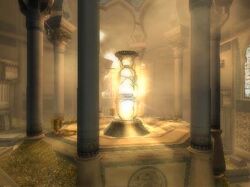
The Hourglass in the Tower of Dawn
A pivotal gameplay chemical element is the Prince's Dagger of Time. Information technology contains "charges" of the Sands of Time from the hourglass that allow the Prince to control time. The Prince has the ability to "reverse" time and travel upward to ten seconds into the by. While using this ability, all sounds and previous action play backwards, and the play environment accurately resets to its previous state. For example, if the Prince was struck past an enemy assault during the rewind period, the health he lost volition be given back to him, or a bridge that was destroyed a few seconds ago will repair itself. The Dagger as well allows the prince to slow down time, and freeze his enemies, using it equally a main-gauche to attack them directly.
The Dagger does not come up with an unlimited number of uses. However, defeated enemies get out behind piles of the Sands of Time, which tin can be captivated by the Dagger to replenish its stock. The stock can also be replenished by arresting Sand clouds. This encourages the histrion to confront and beat out enemies (as opposed to fugitive them) in order to furnish the power to manipulate time during the more tricky acrobatic sections of the game. It must, however be noted that if the player does not blot the Sand from a fallen enemy in about v seconds, said enemy will come dorsum to life. Extra Sand glasses can be gained by collecting eight Sand clouds, and extra Sand tanks (which are used for dissimilar powers than the Sand glasses) are gained by vanquishing xvi enemies after having collected a new glass.
Development
Acquisition of Prince of Persia
When the Learning Company and Broderbund was purchased by Mattell in 1999 for $3.six billion[four], Mattel suffered a major financial loss from the transaction. Mattel's CEO at the fourth dimension of the transaction, Jill Barad was forced out of the company every bit a consequence on business relationship of "investor outrage".[5] Mattel passed ownership of the Learning Company in September of 2000 to Gores Technology Group, a private acquisitions house, for a share of what Gores could go for selling the company to someone else.
In 2001, the amusement holdings of the Learning Company were sold the French development corporation, Ubisoft.[6] Many of Brøderbund'southward games, such equally the Myst series, are published by Ubisoft.[7]
Pre-Production
Ubisoft, who owned the catalog of the previous Prince of Persia games, expressed an involvement in developing a Prince of Persia game of their own. However, the Intellectual Property belonged to Hashemite kingdom of jordan Mechner, who was initially disinterested in getting involved with the production of another Prince of Persia game in calorie-free of the financial failures of Prince of Persia 2: The Shadow and the Flame and Prince of Persia 3D.[7]
One of Ubisoft's smaller subsidiaries, Ubisoft Montreal, was a yr into coding Tom Clancy's Splinter Cell when Yannis Mallat, a producer working at the development studio, took an interest in the Prince of Persia IP. Mallat'due south team brainstormed ideas for a Prince of Persia game if they were given the opportunity to develop something with the IP. Mallat secured resources that allowed them to put together a serial of animation tests at a movement capture studio.[vii]
May 2001, Mechner was invited to Ubisoft Montreal by Mallat. Mallat's team showed him "rough and unpolished" AVI files recorded on their motion capture studio of the Prince performing wall runs and leaping across a gap to grab a nearby ladder. Mechner considered what little Mallat's team did to be a "brilliant expansion" of the gameplay mechanics used in the original Prince of Persia games that presented him with "new possibilities". Mallat team was given the greenlight on their Prince of Persia project and Mechner agreed to consult the evolution team. Mechner wrote both the screenplay and the story for what would go The Sands of Fourth dimension. He as well acted as ADR director for voice actors Yuri Lowenthal (the Prince), Joanna Wasick (Farah) and Barry Dennen (the Vizier). During the summer of 2003, Mechner moved his family to Montreal and signed onto the project every bit a total time designer for the game.
Production
Officially production on The Sands of Time began June 2001, and at its summit was worked on past a staff of 65 people, internally known as "PoP Team".[viii] [9] Evolution ran parallel to that of Splinter Cell, and every bit part of their research, the development squad read One Thousand and One Nights, a collection of stories originating from the Middle East that Mechner had previously used as inspiration when designing the original Prince of Persia.[10] [8] [vii] [xi] Over the course of production, the team ran through over 150 different versions before the retail version.[9] Around 150 people worked on the game. Information technology started with a team of around 7 people, and had 65 at its summit.[12]
The game's title was thought up by the product squad, only the original story built effectually the title proved impossible to work. The original draft had nine main characters (including the Prince, two love interests, two villains, and two helper characters) representing different political factions, and the setting of the Prince's own palace domicile instead of in another kingdom. This storyline ultimately impeded other aspects of evolution, and and so was scrapped. In starting over, the team returned to the "The Sands of Time" title and concept. They decided upon iv key elements for the game: "Unity of fourth dimension and place", with the game taking place over xx-four hours within the palace of Azad; "Acrobatics", referring to the gameplay and how the setting was constructed around this concept; "Combat", with the palace existence filled with monsters to give the game and story a fast-paced feeling; and "Rewind", the ability to turn back and manipulate fourth dimension.[xiii]
One of the early decisions fabricated past the production team was non to refer to Prince of Persia 3D in any degree in designing the gameplay, instead looking to the 1989 original for reference. Their intent was the capture the original feeling of platforming an adventure in a 3D environment. The Rewind mechanic began as a gameplay wish for the title, surviving the initial rewrite of the story and becoming key to both story and gameplay. The Dagger of Fourth dimension and the Sands were both born from the demand to explicate this mechanic in-game. The initial concept was only using the Dagger to rewind time and dispatch enemies, merely its powers were gradually expanded into its current roster.[11]
The chief graphic symbol'due south acrobatics were designed to be novel to the video game medium, inspired by like stunts performed in Crouching Tiger, Hidden Dragon and The Matrix. A video game which provided inspiration for the acrobatic feats of the Prince was Tony Hawk's Pro Skater. Elements such every bit using ladders as role of gainsay, and riding on a magic carpet or a equus caballus were axed early on in development. The Rewind part was suggested by Désilets based on experiences playing Donald Duck: Goin' Quackers, where he had wished to rewind afterwards making a mistake rather than restarting the entire level.[9]
Pre-product was originally estimated at ten months, but it ultimately extended to fourteen months. Each time a new action was created for the Prince, information technology required adjustments to multiple other systems, as leaving them lone would have damaged the game. They likewise needed to make adjustments to the enemy and partner AI, and they did non take fourth dimension to polish those systems. All this meant that the debugging started much later than originally scheduled. The Prince had over 780 scripted movements, far more than whatsoever other character in the game. This caused issues with creating the movements for other characters.[8]
To make the grapheme movements realistic, the squad used motion capture to animate their movements.[fourteen] The game's fine art director, Raphael Lacoste, did non join the team until July 2002, well into the game's production, resulting in multiple delays in creating the game'due south environments. This issue was compounded by the need to produce a demo for the 2003 Electronic Amusement Expo, and so to deliver an unabridged game at the same if non a higher quality than the demo.[8] Each surround needed to work for the Prince'due south set of movements and abilities: the work needed involved checking each rewind sequence, and each of the Prince'southward motion in and result on the surround worked. These issues were compounded by the belatedly delivery of ecology maps. In hindsight, producer Yannis Mallat lamented the fact that they did not have enough time to work out the bug acquired by these problems. Despite these problems, other parts of product including play-testing, management of creative tools, and the integrated testing system.
A cited example was the team discovering a tester that was expert at finding severe bugs, then included her in one of their testing groups, giving her a development kit she could apply to sort out those bugs. This was replicated, and managed to greatly increase the amount of bugs that could be constitute and fixed. The development squad'south enthusiasm was as well loftier, which enabled the problems during development to be overcome.[eight] During the aftermath of E3, the squad considered splitting the game into two parts so they could fit all the desired content, but the idea was dropped. Some other chemical element that needed to be cut afterward the demo was a griffin dominate that would announced 3 times during the Prince'due south journeying.[ix]
The game used an updated version of the company's Jade Engine, designed for Across Skilful & Evil. When the team saw the capacities of the Jade Engine, they decided to use it for The Sands of Fourth dimension. For The Sands of Fourth dimension, the squad made improvements to the engine by calculation additional animations between walking and running, enabling smoother graphic symbol motility. They too fabricated custom animations for the character The engine fabricated editing and fine-tuning the game very easy due to its easy-to-use tools. Using this equally a base, they were able to focus on rapid integration of new elements into the game, and were also able to practise quick testing and adjustments. The team developed "substance" and "glow" systems, which respectively enabled natural movements of fabric and gave the lightning furnishings a more "magical" feel.[15] The way the engine was structured (all avails in a unmarried accessible folder) proved problematic when alterations needed to exist made or new features added.
The team size meant too many people were accessing the engine and were causing data to be overwritten, files to exist corrupted, and the whole system to crash. They attempted to solve the problem using a "data monkey" solution which would allow for simultaneous access, but it came belatedly in development and they did not risk making such a radical change to the system. Instead, they fix a file server to manage check-in times, which could allow for management of access and prioritize disquisitional work.[8]
Writing
Mechner worked as the game's scenario designer and wrote the game'southward script.[13] While researching for the script, Mechner read a translation of the Shahnameh, an ballsy poem written past Ferdowsi between the 10th and 11th century. It helped Mechner visualize the new Prince every bit a more than mature character than the original. Despite this, Mecnher felt that the character could non fully shed the "happy-go-lucky" elements of One One thousand and Ane Nights. In retrospect, Mechner likewise felt that this inability to resolve this inherent disharmonize gave the graphic symbol his charm. Mechner also included specific references in the Prince's dialogue to stories from the Shahnameh.[10]
The story and the Prince were created for newcomers to the series. The narrative of The Sands of Time was focused mistakes and second chances, while an unstated anti-war theme was besides included by Mechner and showcased in the game's opening level.[ten] [13] Mechner created the Dagger of Time as a gameplay and narrative device within the iv core concepts created by the team. Its acquisition past the Prince was directly inspired past the opening of Raiders of the Lost Ark, which had previously inspired the portrayal of the Prince in the original Prince of Persia. The palace of Azad was crafted to be the Prince'south "playground", while some scenes developed the Prince'southward character (the opening attack on the Maharaja'south palace, activating Azad'south traps on the instructions of a deranged baby-sit) were deliberately meant to be morally dubious to the player while increasing empathy with the grapheme.[13]
Mechner's principal goal for The Sands of Time was keeping the narrative simple. Pre-rendered and in-game cinematics were brusque, assuasive equally much of the story as possible into the gameplay, the latter consisting primarily of platforming, linear puzzles and combat that empathized use of the Prince's fourth dimension powers and acrobatics. He also aimed to mix narrative and gameplay genres that might normally disharmonism with one-another.
The three main, the Prince, the Vizier and the Prince's companion, Farah, were the key characters of the narrative. Farah and the Vizier were characters impacted past the Prince's deportment, acting as parallels of the positive and negative elements of Prince's graphic symbol. The Prince'southward begetter, Sharaman, and the Sultan of Azad, were lost authorization figures that added to burden of the Prince's deportment as humans transformed into Sand Creatures. The Artifacts of Fourth dimension protected Farah, the Prince and the Vizier from the Sands of Time. They would play marginally larger roles in later games produced without the supervision of Mechner or the Sands of Fourth dimension manager, Patrice Désilets.
The Prince's narration was difficult for Mechner to integrate into gameplay. It needed to be written to work on 2 levels: showtime to be understandable for showtime-time players, and to gain greater significance upon future playthroughs. The narration besides served to give gentle hints to the player, and expand upon the setting and add depth to the experience.
Mechner referenced 1940s version of The Thief of Bagdad, the works of Edgar Allan Poe, films such equally Double Indemnity and Sunset Boulevard. The Prince's interactions with Farah were likewise an important factor. Equally role of the graphic symbol interaction, Farah was deliberately designed not to be a perfect archer, sometimes hitting the Prince if he strayed into her line of burn down. Only twenty per centum of what Ubisoft Montreal intended to use for Farah made the final product. Many of the features planned for Farah were removed to meet shipping schedules.[13]
ADR and Sound Furnishings
For the sound effects, the team worked with sound company Dane Tracks to create most of the game'south audio furnishings, with the rest being done in Montreal. To brand the enemies in the game stand out, mixing an organic and evil feeling with whispering sounds, rather than using sound effects similar to zombies.[16] Mechner supervised the game'southward voice recording.[vii] One of the unconventional choices fabricated by the team was not to halt gameplay during in-game dialogue, meaning players could miss large portions of character iteration. In add-on to story-based dialogue and banter, context-specific dialogue was written for certain situations. Over thou lines of dialogue were written, though over half of them were cut. To help with vocalisation recording, the recording team created a graph to help the actors playing the Prince and Farah time their exchanges correctly.
Aside from some exceptions which played in sequence, all comments fabricated past Farah when the Prince did a specific thing were stand-alone responses.[xiii] The Prince was voiced by Yuri Lowenthal, whose operation proved popular and would return to voice the character in future games set afterward The Sands of Time. Speaking in a 2008 interview, Lowenthal felt "that [he] in a way originated that office".[17]
Ports to other Systems
Prince of Persia: The Sands of Time was developed as a multi-platform game, made available to all four sixth generation consoles during its initial release in November of 2003 and the PC December 2003. Each version of The Sands of Time varied depending on the console. Graphically speaking, the Xbox and Nintendo GameCube featured higher resolution textures opposed to the PlayStation 2 release, which featured low resolution textures.[18] The GameCube version of The Sands of Time featured deadened or low volume settings even when modified by the player.[xix] The PC port of The Sands of Fourth dimension was generally considered the best version of the game to purchase with regard to controls, audio, framerate and visual fidelity (depending on the hardware of the user).[nineteen] [18]
Special features for the PlayStation ii, GameCube and Xbox versions of The Sands of Time included the original Prince of Persia plus the "Secret Level" of the game, a remake of the first dungeon level from the original Prince of Persia. The Xbox version of The Sands of Time is the simply console version to include Prince of Persia 2: The Shadow and the Flame with the original game. The hugger-mugger level of the game and the original Prince of Persia games were attainable using cheat codes. The Xbox and GameCube versions of The Sands of Time featured a "Making of" featurettes that delved briefly into the development process of game.[20]
Handheld Ports
GameBoy Advanced
- Master commodity: Prince of Persia: The Sands of Fourth dimension (GBA)
The GameBoy Advanced port of The Sands of Time was developed by Ubisoft Montreal alongside the console versions of the game. The port featured the same plot and story of the panel and PC versions of game, minimized to fit Nintendo's handheld panel.[21]
Mobile Game
- Primary commodity: Prince of Persia: The Sands of Time (Mobile)
The mobile version of The Sands of Time was developed past Gameloft and published by Ubisoft. Released in 2004, The mobile version of the game featured gameplay modified to suit mobile phones and vastly different environs settings and combat.[21]
Compilation Releases
Following the initial "finish" of The Sands of Fourth dimension Trilogy, Prince of Persia: The Sands of Time and the following three games in the series were featured in two "compilation" releases for the PlayStation 2, PlayStation iii and PC. The first, Prince of Persia: The Sands of Time Trilogy was initially released a year following the release of Prince of Persia: The Two Thrones, October 27, 2006 in Europe.[22] It was afterwards released in the North America, January 12, 2009 on the PC.[23] November 21, 2008, all 3 games subsequently were released on the Valve Corporation platform, Steam.[24] [25] [26]
The 2d, Prince of Persia Trilogy (HD Collection) [27] likewise included all three console games as a office of PlayStation iii'south Classics Hard disk collection.[27] The remastered drove was released on November xix, 2010 on Blu-ray in PAL regions. Information technology was afterwards released in North America as downloadable titles only for the PlayStation Network'south store November 16, 2010 while the other 2 games followed in December 2010.[28] The Blu-ray version was originally planned for a March 22, 2011 release[29], but the collection then ended up being delayed until April 19, 2011.[29]
2020 Remake
A remake of the game was announced at Ubisoft Forward 2020, and originally scheduled to release on January 21, 2021 for Microsoft Windows, PlayStation 4 and Xbox I, was later on delayed to March 18, 2021. The announcement trailer drew criticism from fans who considered the game's graphics to exist lackluster, particularly every bit it was being developed using the newest iteration of Ubisoft'due south AnvilNext engine. Ubisoft responded by stating that the visual fashion was an intentional choice, as they had wanted it to exist "unique [...] to make this game standout from other games" due to its fantasy elements. [30] [31] [32]
Reception
Reviews
Prince of Persia: The Sands of Time was received with critical acclamation. Border gave the game a score of 9 out of x, saying that, despite difficulty spikes caused by respawning enemies, "the game cannot be commended highly enough".[33] IGN's Matt Casamassina establish the entire experience enjoyable, saying that "Whether yous're a diehard Prince of Persia fan or somebody with a mild interest in action-adventures, The Sands of Time is a must ain -- a presentlyhoped-for-classic worthy of a permanent identify in your collection".[34] 1UP.com, while pointing out the photographic camera control as "tricky", said that the game "will brand your breast explode if you lot've got a heart status (in a good way, of course)".[35] GameSpot'south Greg Kasavin called it "a game that can be recommended wholeheartedly".[36] Both Eurogamer and Official PlayStation Mag positively compared the game's aesthetics and presentation to Ico.[37] [38] Francesca Reyes of Official Xbox Magazine gave the game a good review, praising the story and general gameplay, but finding the gainsay difficult at times and lack of new skills. In closing, she praised the game'due south lasting entreatment: "When the whole thing is over, it'south perfectly timed to leave y'all wanting more. Information technology's a stunning and rare achievement that makes you feel happy to be a gamer."[39] Japanese gaming mag Famitsu gave the PS2 version a practiced review, saying that the action was smoothen and challenging, bearing similarities to the original Prince of Persia, and ane reviewer found the Prince "colourful".[40]
The PC version shared much of the panel version'due south praise, but the controls and responsiveness of the camera caused criticism.[41] [42] [43] The Game Boy Advance version garnered lower scores than the console and PC versions due to its scaled-downwards gameplay and presentation, only was still generally praised equally a competent port of the game.[44] [45] [46] [47] [48] Nintendo Ability said that "Acrobatic moves and inventive traps have never been as free-flowing as they are in [The Sands of Time]".[49] Reviewing the mobile version, IGN reviewer Levi Buchanan was impressed by the company'due south adaptation of the console game'southward basic actions and temper, giving it a score of ix.v out of 10.[50] 1UP reviewer Corey Padnos was pleased with the Prince's acrobatic functioning and the game'due south general performance, while lamenting the lack of the fourth dimension-based mechanics of the main games and the lack of plot.[51]
Accolades
The game was named Editor's Choice by GameSpot and IGN.[34] [36] At the 2003 Game Critics Awards, the game was awarded as "Best Activeness/Adventure Game".[52] The Academy of Interactive Arts & Sciences, at its meeting in 2004, recognized the game equally "Console Game of the Year", "Panel Platform Action Adventure Game of the Year", and "Computer Action/Adventure Game of the Year". Information technology was also awarded for "Outstanding Innovation in Computer Gaming", "Outstanding Accomplishment in Game Pattern", "Outstanding Achievement in Visual Engineering", "Outstanding Achievement in Animation", and "Outstanding Accomplishment in Game Play Engineering science".[53] At the 2004 Game Developers Choice Awards, the game won the "Excellence in Game Pattern" and "Excellence in Programming" awards. It was also nominated in the "Game of the Twelvemonth" and "Excellence in Visual Arts" categories.[54]
Official Nintendo Magazine ranked it the 86th best game available on Nintendo platforms. The staff praised the programmer's successful transition from second to 3D.[55] IGN and Border both named information technology among their 100 greatest games of all time in 2005 and 2007 respectively.[56] [57] Calculator and Video Games placed it in its list of the 101 all-time PC games ever.[58]
Sales
During its North American debut, The Sands of Time suffered from poor sales. December, the PlayStation 2 version had sold 218,000, the Xbox version 128,000, and the GameCube version 85,000. Its combined sales since release at that time totaled 272,000 (PS2), 172,000 (Xbox), and 100,000 (GameCube). It was speculated that its sales were negatively affected by the concurrent release of Beyond Proficient & Evil, alongside other prominent releases at the time. In response to this, Ubisoft offered copies of their other games costless with purchases of The Sands of Fourth dimension, providing a boost to sales.[59]
As of 2006, the game has apparently sold 700,000 units, bringing an estimated revenue of $24 million.[60] During its calendar week of release in Japan, the game reached 7th place in the charts, selling fourteen,000 units. This was noted as existence loftier for a western game released in Japan. By the cease of 2004, it had sold 26,116 units.[61] [62] In Europe, it was among the top ten best-selling games beyond main territories, selling over ii million units.[63]
Soundtrack
- Primary article: Prince of Persia: The Sands of Time (Soundtrack)
A soundtrack anthology for the game, Prince of Persia: The Sands of Fourth dimension (Original Soundtrack), was released in Japan in October twenty, 2004 by Scitron Digital Content.[64] Tracks from the game were included in an album featuring from both The Sands of Fourth dimension and its 2 sequels, titled Prince of Persia: The Official Trilogy Soundtrack, the album was released past Ubisoft Entertainment on Dec one, 2005.[65]
Film
- Main article: Prince of Persia: The Sands of Time (film)
Prince of Persia: The Sands of Fourth dimension was adapted to make a film produced by Jerry Bruckheimer for Buena Vista Pictures. The initial script was written by Jordan Mechner with subsequent drafts by Jeffrey Nachmanoff.
The motion picture was released 28 May, 2010. When discussing the adaptation, Mechner said, "Rather than do a straight beat-for-beat adaptation of the new videogame, we're taking some cool elements from the game and using them to craft a new story - much as 'Pirates' [of the Caribbean area] did with the theme park ride".
Trivia
- In Tom Clancy'south Splinter Jail cell: Pandora Tomorrow there is a train level where magazines featuring Prince of Persia: The Sands of Time are scattered across the level.
- During the get-go level of Tom Clancy'south: Rainbow Six 3: Black Arrow at that place are some advertisements featuring "Prince of Persia: The Sands of Time" shown across the level.
Video
Trailer
| Trailers |
|---|
| Prince of Persia The Sands of Time E3 2003 Trailer E3 2003 Trailer Prince of Persia one (The Sands of Time) Trailer The Sands of Time Trailer Prince of Persia The Sands of Time DEMO - PS2 - Widescreen As featured on the U.S Official PlayStation Magazine Issue 95. Prince Of Persia Sands Of Time - DJ Trailer Sands of Fourth dimension Commercial Prince of Persia The sands of fourth dimension commercial Sands of Time 30 2nd TVSpot Prince of Persia Sands of Fourth dimension commercial Sands of Time "Take chances" TVSpot |
Development
| Development |
|---|
| How Information technology'south Fabricated - Video Games The Making of Prince of Persia The Sands of Time Prince of Persia The Sands of Time development. Part 1. Evolution of the Prince'south design Prince of Persia The Sands of Fourth dimension evolution. Part ii. Palace and locations. Prince of Persia The Sands of Time development. Office iii. Sand creatures. Prince of Persia The Sands of Fourth dimension development. Part four. Sand enemies |
Gallery
Box Art
| Box Fine art |
|---|
Promotional
| Promotional |
|---|
Screenshots
| Screenshots |
|---|
Wallpapers
| Wallpapers |
|---|
| |
Concept Fine art
| Concept Fine art |
|---|
| |
References
- ↑ Prince of Persia: The Sands of Time - Accolades
- ↑ Prince of Persia: The Sands of Time - Sales
- ↑ Prince of Persia: The Sands of Time - PlayStation 2
- ↑ The investing game
- ↑ Mattel To Ditch The Learning Visitor
- ↑ Irish grouping buys Broderbund software firm
- ↑ 7.0 7.one seven.two 7.3 7.4 Mclaughlin, Rus; Collura, Scot; Buchanan, Levi (18 May 2010). "IGN Presents The History of Prince of Persia"
- ↑ viii.0 8.1 8.2 8.3 8.4 8.5 Mallat, Yannis. "Postmortem: Ubisoft'southward Prince of Persia: The Sands of Time" (PDF). Game Developer (UBM TechWeb) (April 2004): 48–51.,(Archive Link)
- ↑ nine.0 ix.1 nine.two 9.3 Keighley, Geoff (ten November 2003). "The Concluding Hours of Prince of Persia"., (Archive URL)
- ↑ 10.0 10.1 ten.2 Mechner, Jordan; Sina, A. B. (27 April 2010). "Subsequently by Jordan Mechner". Prince of Persia: The Graphic Novel. Offset Second Books. pp. 193–199. ISBN 978-1596436022.
- ↑ 11.0 xi.i Game Design: Theory & Exercise 2nd Edition: Interview with Jordan Mechner, (Archive URL)
- ↑ Kohler, Chris. "Where Are Prince Of Persia: The Sands Of Time's Developers Now?" July 2018
- ↑ thirteen.0 13.ane 13.2 xiii.3 13.4 13.five Mechner, Jordan (22 Feb 2008). "The Sands of Time: Crafting a Video Game Story". Electronic Volume Review
- ↑ How It'south Made, "Segment D: Video games". Flavour three. Episode 12. Discovery Aqueduct.
- ↑ XBW interview: Prince of Persia: The Sands of Fourth dimension (Dutch), (Archive Link)
- ↑ "Making of Prince of Persia: The Sands of Time" Prince of Persia: The Sands of Time (Nintendo GameCube Game Disc, DVD). Ubisoft. 18 Nov 2003.
- ↑ Lowenthal: MCM Expo 2010 interview (part two) (Archive URL)
- ↑ 18.0 18.1 PRINCE OF PERSIA: THE SANDS OF Time HEAD-TO-HEAD (Folio 3)
- ↑ 19.0 xix.1 PRINCE OF PERSIA: THE SANDS OF TIME Head-TO-HEAD (Page iii)
- ↑ PRINCE OF PERSIA: THE SANDS OF TIME Caput-TO-Caput (Page 2)
- ↑ 21.0 21.ane Hardcore Gaming 101: Prince of Persia
- ↑ Prince of Persia Trilogy release information for PlayStation two
- ↑ Prince of Persia: The Sands of Fourth dimension Trilogy (PC)
- ↑ Prince of Persia: The Sands of Fourth dimension PC Releases
- ↑ Prince of Persia: Warrior Within PC Releases
- ↑ Prince of Persia: The Two Thrones PC Releases
- ↑ 27.0 27.ane Rumor: Mortal Kombat and Prince of Persia to go 3D on PS3
- ↑ Prince of Persia HD Titles Coming to North America
- ↑ 29.0 29.1 Splinter Cell Trilogy sneaking into shops in late March
- ↑ "The Prince of Persia remake'south graphics were its developers' choice"
- ↑ "Developers Explicate Prince Of Persia: The Sands Of Time Remake'south Visuals"
- ↑ "Gamers Hugely Disappointed With Prince of Persia Remake"
- ↑ Prince of Persia: The Sands of Time Review, (Annal URL)
- ↑ 34.0 34.ane Casamassina, Matt (7 November 2003). "Prince of Persia: The Sands of Time (PS2)".
- ↑ "Prince of Persia: The Sands of Fourth dimension (PS2)". 1UP.com. 23 December 2003
- ↑ 36.0 36.1 Kasavin, Greg (ix December 2003). "Prince of Persia: The Sands of Time Review (PS2)". GameSpot.
- ↑ Bramwell, Tom (17 November 2003). "Prince of Persia: The Sands of Fourth dimension (PS2)".
- ↑ Rybicki, Joe (December 2003). "Prince of Persia: The Sands of Time". Official U.S. PlayStation Magazine: 166.
- ↑ Reyes, Francesca (January 2004). "Prince of Persia: The Sands of Time" (PDF).
- ↑ プレイステーション2 - プリンス・オブ・ペルシャ 〜時間の砂〜 [PlayStation 2 - Prince of Persia: The Sands of Time]. Famitsu Weekly (Enterbrain) (821). 10 September 2004.
- ↑ "Prince of Persia: The Sands of Time (PC)". 1UP.com. nine May 2004.
- ↑ Kasavin, Greg (9 December 2003). "Prince of Persia: The Sands of Time Review (PC)". GameSpot.
- ↑ Butts, Steve (9 December 2003). "Prince of Persia Review (PC)". IGN.
- ↑ Shoemaker, Brad (15 December 2003). "Prince of Persia: The Sands of Time Review (GBA)". GameSpot.
- ↑ Barnholt, Ray (18 November 2003). "GameSpy: Prince of Persia: The Sands of Time (GBA)". GameSpy.
- ↑ Biessener, Adam (Dec 2003). "Prince of Persia: The Sands of Fourth dimension (GBA)". Game Informer (GameStop) (128): 185.
- ↑ Bedigian, Louis (16 Nov 2003). "Prince of Persia: Sands of Time - GBA - Review". GameZone.
- ↑ Harris, Craig (12 November 2003). "Prince of Persia: The Sands of Time (GBA)". IGN.
- ↑ "Prince of Persia: The Sands of Time (GC)". Nintendo Ability (Nintendo) 177: 147. February 2004.
- ↑ Prince of Persia: Sands of Time (Mobile),(Annal URL)
- ↑ Prince of Persia: The Sands of Time (Wire) (Archive URL)
- ↑ Game Critics Awards 2003 Winners (Archive URL)
- ↑ Interactive Achievement Laurels Winners Announced, (Archive URL)
- ↑ Game Developer Choice Awards 2004 Nominees and Winners, (Archive URL)
- ↑ Nintendo Feature: 100 Best Nintendo Games: Part One, (Archive URL)
- ↑ IGN'due south Top 100 Games of All Time, (Annal URL)
- ↑ Edges Top 100 Games of All Time, (Archive URL)
- ↑ The 101 all-time PC games ever, role ii, (Archive URL)
- ↑ Graphs: Prince of Persia, (Archive URL)
- ↑ The Elevation 100 Games of the 21st Century, (Archive URL)
- ↑ Japanese Sales Charts, Calendar week Ending September fifth, ([archiveurl=http://spider web.archive.org/web/20150512232847/http://www.gamasutra.com/php-bin/news_index.php?story=4273 Annal URL])
- ↑ ja:2004年テレビゲームソフト売り上げTOP500, (Archive URL)
- ↑ Ubisoft Announces 3rd Qtr. Results, (Archive URL)
- ↑ of Persia The Sands of Fourth dimension Original Soundtrack, (Archive URL)
- ↑ Prince Of Persia The Official Trilogy Soundtrack, (Annal URL
| Prince of Persia series | |
|---|---|
| Original Series | Prince of Persia • Prince of Persia 2: The Shadow and the Flame • Prince of Persia 3D |
| Sands of Time Trilogy | Prince of Persia: The Sands of Time (GBA) • Prince of Persia: The Forgotten Sands (PSP, DS, WII) • Battles of Prince of Persia • Prince of Persia: Warrior Inside (PSP) • Prince of Persia: The Ii Thrones (Rival Swords) • Prince of Persia: The Sands of Time Remake |
| 2008 Reboot | Prince of Persia: Stories And Secrets (comic) • Prince of Persia (2008) • Prince of Persia: The Fallen King • Prince of Persia: Epilogue |
| Cancelled Games | Prince of Persia: Kindred Blades (scrapped sequel concept) • Prince of Persia: Assassin (cancelled spin-off) • Prince of Persia: Redemption (proposed title) |
| Collections | Prince of Persia Trilogy (PlayStation 2, PC) • Prince of Persia Trilogy (HD Collection) (PlayStation iii) |
| Mobile Games | Prince of Persia Classic (remake) • Prince of Persia: The Shadow and the Flame (remake) • Prince of Persia: Harem Adventures • Prince of Persia: The Sands of Time • Prince of Persia: Warrior Within • Prince of Persia: The 2 Thrones • Prince of Persia: The Forgotten Sands • Prince of Persia • Prince of Persia: Time Run • Prince of Persia: Escape |
| Comics | Prince of Persia: The Graphic Novel |
| Sands of Fourth dimension Picture | Prince of Persia: The Sands of Time • Prince of Persia: The Sands of Time (comic) • Prince of Persia: Earlier The Sandstorm (comic) • The Chronicle of Young Dastan (book #ane) • Walls of Babylon (Young Dastan Chronicles) (book #2) • The Search for Cyra (Young Dastan Chronicles) (book #3) • Prince of Persia: To Right a Wrong • Prince of Persia: The Guardian's Path |
| Soundtracks | The Sands of Time • The Forgotten Sands • The Forgotten Sands (Wii Soundtrack) • Warrior Inside • Trilogy Soundtrack • Prince of Persia (2008) Soundtrack • Sands of Time (film soundtrack) |
Source: https://princeofpersia.fandom.com/wiki/Prince_of_Persia:_The_Sands_of_Time_(game)




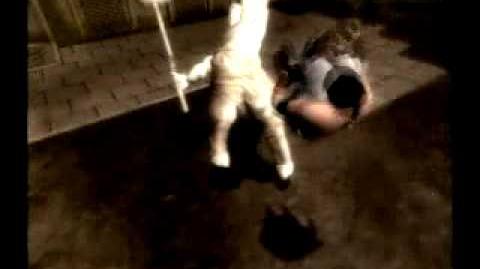
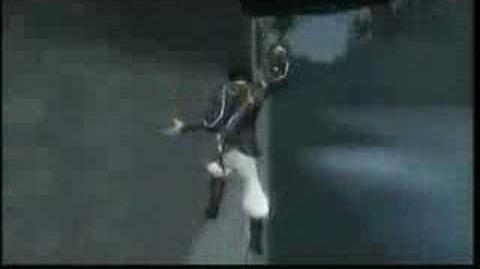


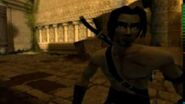
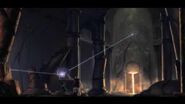
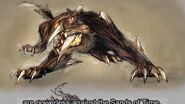
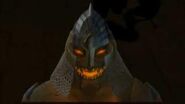
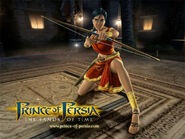
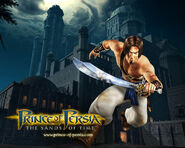





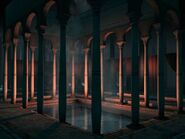








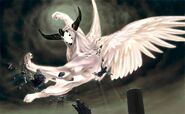
0 Response to "Prince of Persia Sands of Time Cover Art for the Playstation 2"
Post a Comment